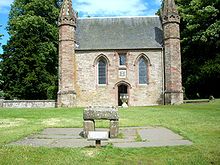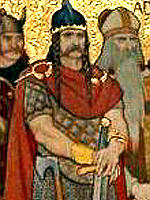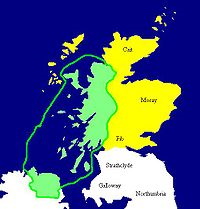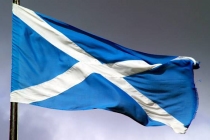The Stone of Destiny

The Stone of Scone (Scottish Gaelic: An Lia Fàil)—also known as the Stone of Destiny, can now be found in the Crown Room of Edinburgh Castle, along with the crown jewels of Scotland (the Honours of Scotland). The crown was used for the coronation of Scottish monarchs from 1543 (Mary I) to 1651 (Charles II). The Stone of Scone was used for centuries in the coronation of monarchs in Scotland. It was historically kept at the now-ruined Scone Abbey in Scone (Scottish Gaelic:Sgàin), near Perth (Peairt). Perth is located in an area that is known to have been occupied since Mesolithic times more than 8000 years ago. Much older stones than that of the Stone of Destiny exist nearby, with standing stones and circles dating to the Neolithic period about 4000 BC.

Scone is a medieval village that grew up around the monastery and has centuries old association with kings and coronations. It is thought that an important ceremonial and religious centre existed at Scone from the 5th century. It's importance growing during the 9th century with the amalgamation of the Pictish and Gaelic kingdoms. Scone was a significant site in the development of the ancient Kingdom of Alba and the emergence of the Kingdom of Scotland. It is thought that Cináed mac Ailpín commonly anglicised as Kenneth MacAlpin (King Kenneth I, 810 – 13 February 858) brought the Stone of Destiny to Scone.

There are a number of theories as to the origin of the Stone of Scone. One such story concerns Fergus Mór mac Eirc (Scottish Gaelic: Fergus Mòr Mac Earca) who was the first King of the Scots in Scotland and brought the Stone from Ireland and was crowned on it. He was King of the Dál Riata a Scots and Pictish overkingdom which encompassed parts of western Scotland and northeastern Ulster in Ireland. Erc, his father was king of Irish Dál Riata until 474. The Stone of Destiny remained a powerful symbol of Scottish monarchy used in the coronation of its kings for centuries. In 1296 Edward I of England took the stone from Scone, near Perth, and had it built into his own throne. Since then it has been used in the coronation ceremonies for the monarchs of England and then Great Britain.
There is no doubt that Scottish people saw Edward's spoil of war as being held in captive in the foreign capital of London. It was on Christmas Day 1950, that four Scottish students (Ian Hamilton, Gavin Vernon, Kay Matheson, and Alan Stuart) removed the stone from Westminster Abbey in London. It was found three months later on April 11, 1951 at Arbroath Abbey in the Scottish town of Arbroath (Scottish Gaelic: Obar Bhrothaig). It was sent to Westminster Abbey some months later. The stone was eventually returned to Scotland and arrived at Edinburgh Castle on St Andrew’s Day 30th November 1996, where it remains. A replica of the Stone of Scone stands upon Moot Hill in the grounds of Scone Palace.
- Scottish
- English
- Log in to post comments





